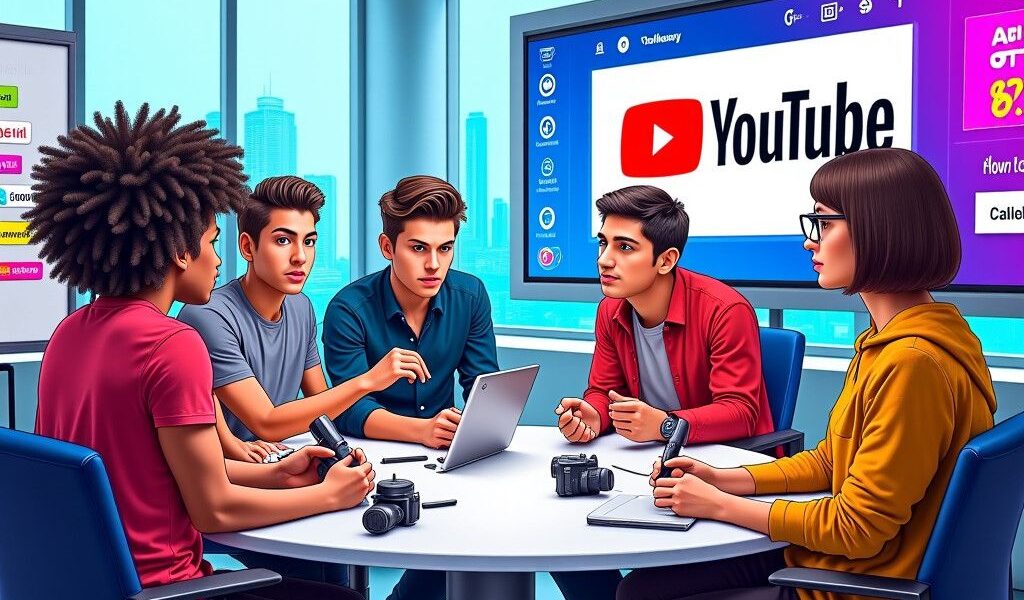As we move into 2024, digital marketers are gearing up to leverage new strategies that align with evolving audience behaviors. YouTube remains a pivotal platform for digital marketing activities, offering rich opportunities for brand engagement and customer acquisition. Understanding the top trends predicted for this year can significantly enhance your campaign performance.
1. Emphasis on Short-Form Content
Short-form video content has exploded in popularity thanks to platforms like TikTok. YouTube has recognized this trend, having introduced YouTube Shorts as a direct response. According to recent reports, over 30 billion daily views were attributed to Shorts globally. This trend presents marketers with the challenge and opportunity to produce engaging content that captures attention quickly. Businesses can harness this format to create bite-sized tutorials, sneak peeks of longer videos, or creative advertisements that resonate with younger audiences craving quick, digestible content.
For instance, brands like Gymshark have effectively used Shorts to promote fitness routines, resulting in significant engagement increases. By investing time in short-form content creation, marketers can gain visibility in a crowded space.
2. Interactive and Immersive Experiences
Marketers are increasingly turning to interactive content to foster stronger connections with their audience. Polls, quizzes, and live Q&A sessions within videos keep viewers engaged and participating actively. YouTube supports features such as polls and interactive cards that can be used effectively to gather viewer opinions and preferences.
An illustrative example is Bob Ross’s channel, where art enthusiasts have participated in live painting sessions, asking questions and interacting in real-time. Providing immersive experiences can drive higher retention rates and foster community spirit, enhancing brand loyalty.
3. Augmented Reality (AR) Integration
Another imminent trend is the integration of augmented reality (AR), enabling users to visualize products before making a purchase. This is particularly valuable in the e-commerce sector. AR technology is becoming more accessible, allowing brands to develop YouTube ads that incorporate 3D models of products.
For instance, furniture brands like IKEA offer AR experiences that allow customers to visualize how a piece of furniture would look in their home. This not only elevates the user experience but also increases the likelihood of conversion as consumers can make informed purchasing decisions.
4. Focus on Authenticity and Reliability
As consumers become more discerning, authenticity in content becomes essential. Brands that focus on genuine storytelling are likely to resonate more with their audiences. This year, expect to see more creators collaborating with brands while maintaining a sense of authenticity. The New York Times reported that 70% of Gen Z prefers brands that align with their values, pushing marketers to be more transparent about their operations and sustainability efforts.
A case study is Adidas, which has successfully harnessed authentic endorsements from athletes and influencers. Their campaigns emphasize real experiences over flashy advertisements, creating a genuine connection with potential buyers.
5. Continuous Growth in Influence Marketing
Influencer marketing remains a strong component of digital marketing strategies in 2024. Brands can expect to see more micro and nano influencers gaining traction due to their niche followings and perceived authenticity. Collaborating with smaller influencers often leads to higher engagement rates and a more loyal audience.
For instance, smaller beauty brands often partner with nano influencers for product launches, resulting in an organic reach that is both effective and budget-friendly. Marketing teams should prioritize influencer partnerships that have a genuine affinity for the brand, as this will likely result in a more organic promotion.
6. Integration of AI in Content Creation
Artificial Intelligence (AI) tools are reshaping the content creation landscape, making video production more accessible. With advances in AI-assisted editing software and content generation plants, marketers can enhance production efficiency and creativity at a fraction of the cost.
For example, tools like Pexels Video offer high-quality stock footage, while AI editing applications streamline the editing process, allowing marketers to focus on strategy rather than minutiae. This trend can result in increased video output, facilitating an agile content strategy that keeps pace with audience needs.
Conclusion
YouTube continues to serve as a powerful platform for marketing efforts in 2024, supported by emerging trends that digital marketers must embrace for sustained success. Focusing on short-form content, interactive elements, AR integration, authenticity, influencer marketing, and leveraging AI tools can enhance brand engagement and drive conversions.
As these trends evolve, marketers must remain vigilant and flexible, adapting their strategies to meet the needs of their audience and the competitive landscape. In doing so, they can harness the full potential of YouTube to achieve their marketing goals.












